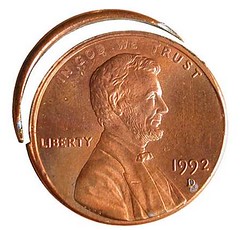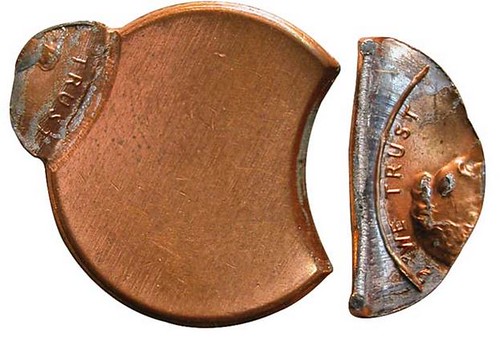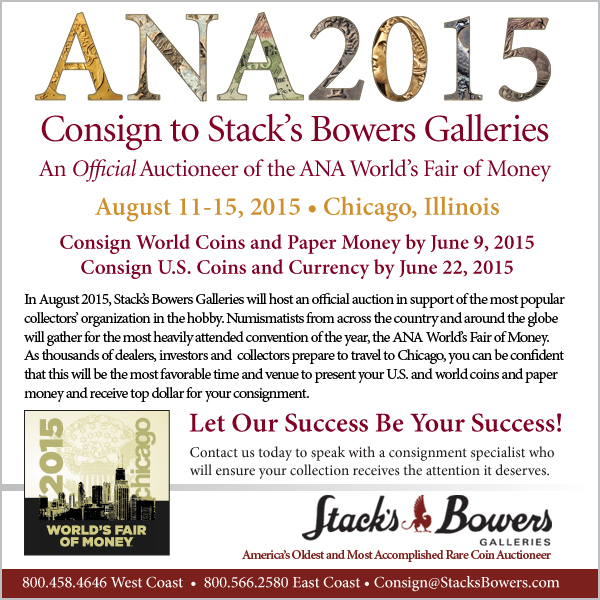
PREV ARTICLE
NEXT ARTICLE
FULL ISSUE
PREV FULL ISSUE
STRIKE CLIP ERRORS
Another Coin World article had an unusual (to me, at least) word in its headline. The Collectors' Clearinghouse column by Mike
Diamond in the June 15, 2015, issue is headlined Strike clips diverse in form, etiology. I had to look that last word up.
Here's an excerpt from the article, an overview of strike clip errors and their causes. -Editor
etiology . e·ti·ol·o·gy also ae·ti·ol·o·gy (ē′tē-ŏl′ə-jē)
To read the full definition, see:


Strike clips arise when a coin or planchet is ripped apart in the striking chamber. Separation may result from vertical shear forces, horizontal shear forces, tensile forces, or combinations of the three. The line of separation may be concave, convex, straight, or uneven. Previous columns (Aug. 25, 2008; April 5, 2010) considered one type of elliptical strike clip that is created when an off-center planchet is trapped between a descending hammer die and a collar frozen in the “up” position. The planchet’s protruding or exterior portion becomes a concave or crescentic strike clip while the interior portion becomes an elliptical strike clip. Both parts are preserved in the illustrated 1992 Lincoln cent. A similar event is responsible for the polygonal strike clip on a 1982 Canadian cent. It was apparently sheared in two on the second strike between a stiff collar and a newly-struck cent clinging to the face of the hammer (reverse) die. While vertical shear forces are responsible for the previous two strike clips, horizontal shear forces are responsible for saddle strike clips. In a saddle (tandem) strike, a planchet is simultaneously struck by two adjacent die pairs. The space between the two off-center strikes tends to buckle upward toward the hammer die. Strike clips that arise from tensile stresses are close cousins of “coin shrapnel” (Collectors’ Clearinghouse, Dec. 21, 2009). The latter term refers to fragments that break away from multi-struck coins, pile-ups, and disintegrating die caps. Tensile strike clips also share affinities with coins torn apart as the result of being struck through hardware or machine parts. Here we confine the strike clip moniker to those coins sundered in a single strike and where nothing but discs of coin metal were involved. Collectors should be aware that many kinds of strike clips are erroneously described and encapsulated as “struck fragments,” “struck scrap,” and various types of conventional clips. 
Two strike clips - one straight and one concave To read the complete article, see:

Wayne Homren, Editor The Numismatic Bibliomania Society is a non-profit organization promoting numismatic literature. See our web site at coinbooks.org. To submit items for publication in The E-Sylum, write to the Editor at this address: whomren@gmail.com To subscribe go to: https://my.binhost.com/lists/listinfo/esylum All Rights Reserved. NBS Home Page Contact the NBS webmaster 
|